Introduction: The principle of ANC technology is not esoteric, it is taught in high school physics, it is wave interference. If you are still fresh in the memory of the college entrance examination review, you must remember that if two waves have the same amplitude and opposite phase, the result of their interference is to cancel each other, and you can't see the wave!
The principle of ANC technology is not esoteric, it is taught in high school physics, it is wave interference. If you are still fresh in the memory of the college entrance examination review, you must remember that if two waves have the same amplitude and opposite phase, the result of their interference is to cancel each other, and you can't see the wave!
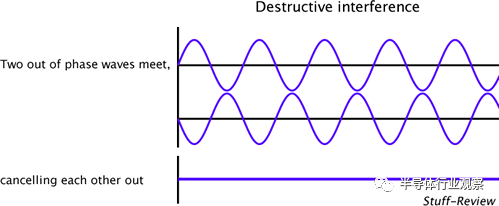
As shown in the following figure, the microphone samples the external noise, and the sampled noise is processed by the active noise cancellation circuit, which generates a "reverse" noise with the opposite phase and appropriate amplitude of the sampled noise, and is sent to the loudspeaker of the headset, so that the noise is cancelled in front of the human ear, and the person with the headset can only hear music. And you can't hear the noise.
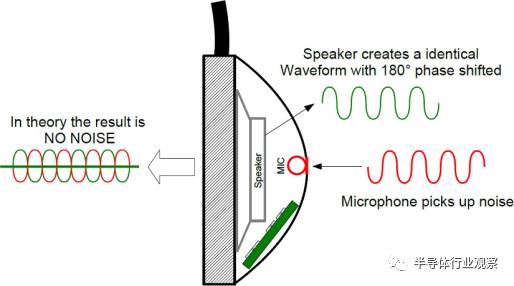
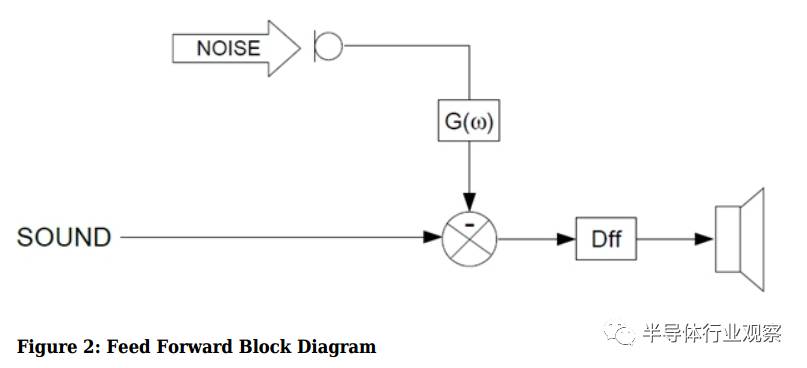
However, there is a problem with feedforward noise cancellation. You must have tried to blow into a microphone! Blowing into the microphone can produce a loud sound where the microphone is coming out, but this blowing sound is not heard when you take the microphone away. Similarly, in feedforward active noise cancellation, if there is wind blowing near the sampling microphone, then the microphone may produce a lot of anti-noise, but in fact, the sound of the wind is not heard by the human! In other words, if there is wind blowing at the microphone (wind noise), the microphone will think that the ambient noise is very large, but the person can not hear any noise, so the false positive of the microphone will produce more noise!
To solve this problem, feedback active noise cancellation can be used, as shown in the figure below.
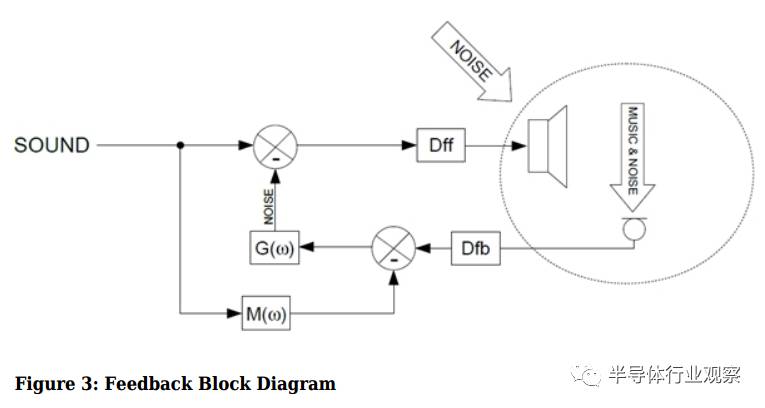
In the feedback active noise cancellation scheme, the microphone does not sample the direct ambient noise, but the sound at the earphone output, which obviously includes music and ambient noise. So how do you selectively cancel out the noise but keep the music? You have to subtract the music from the sound that's sampled here, so the signal that's left is just noise; And then based on this noise to generate noise cancellation signal. In this way, there will be no wind noise problem. However, there is a new problem here, which is that feedback systems usually have a much smaller bandwidth than feedforward systems, so active noise cancellation using feedback mode has limited effect on high-frequency noise cancellation.
Since both schemes have their advantages and disadvantages, how about combining them? This is the hybrid mode of active noise cancellation, using both feedforward and feedback, the system can be properly designed to avoid weaknesses, that is, to avoid wind noise and offset high-frequency noise.
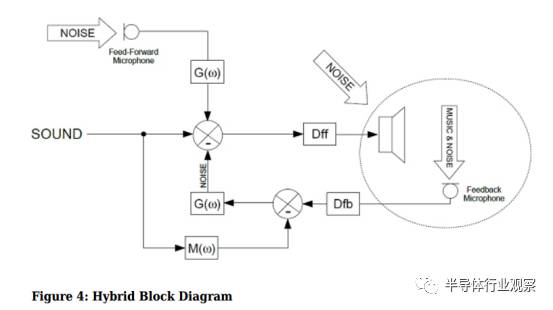
Bluetooth headset with ANC
With the launch of Apple's AirPod, all-wireless headphones are also becoming more popular. More recently, many companies have launched all-wireless headphones with ANC. The main challenge of doing ANC on an all-wireless headset is signal synchronization. As mentioned earlier, both feedback and hybrid ANC schemes require subtracting the sampled signal from the music to produce a noise cancellation signal, which requires high synchronization between the music and the sampled signal. In wired headphones, this is not difficult because the music transmission channel is ideal; However, at present, all-wireless headsets mostly use Bluetooth technology to transmit signals, so the synchronization between Bluetooth transmission signals and ANC signals must be carefully designed, and Bluetooth delay is the key point here. In addition, since the headset in the all-wireless scheme has its own battery, from the perspective of user experience, the capacity of the battery cannot be very large, otherwise the weight of the headset will exceed the standard, so the power consumption of the ANC circuit must be carefully controlled to ensure good performance and a long enough battery life.
免责声明: 本文章转自其它平台,并不代表本站观点及立场。若有侵权或异议,请联系我们删除。谢谢! Disclaimer: This article is reproduced from other platforms and does not represent the views or positions of this website. If there is any infringement or objection, please contact us to delete it. thank you! |


